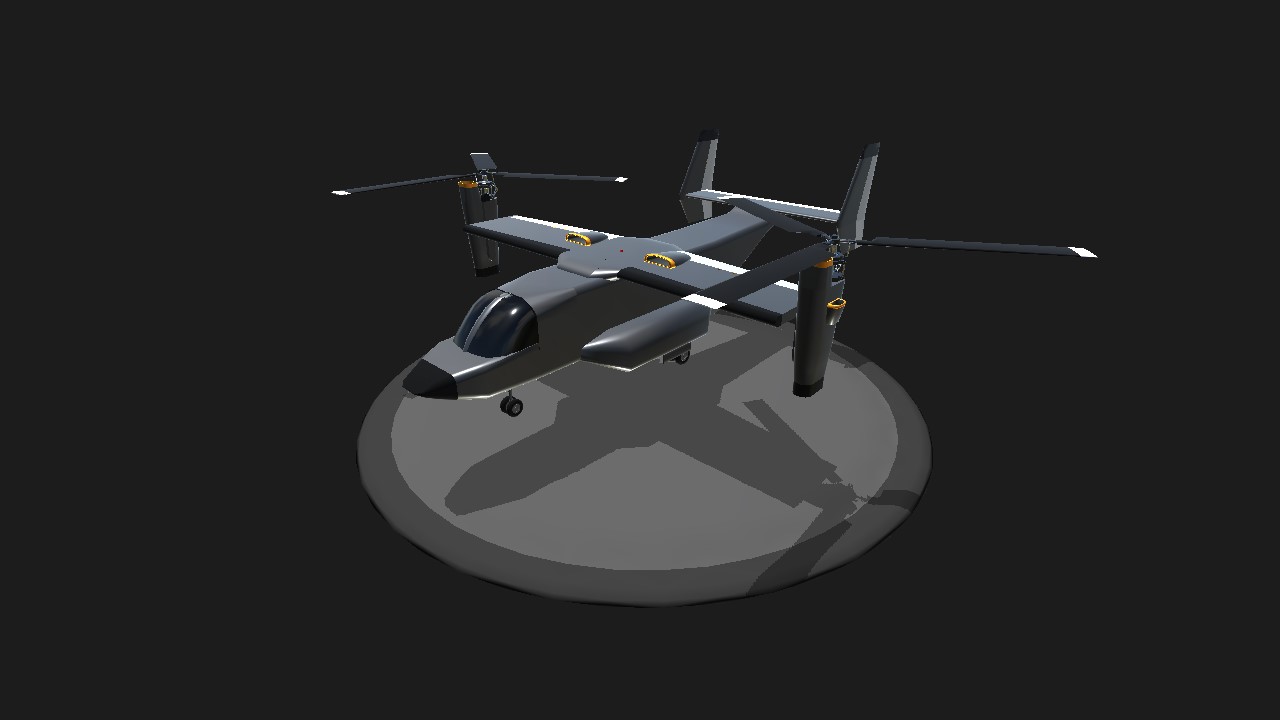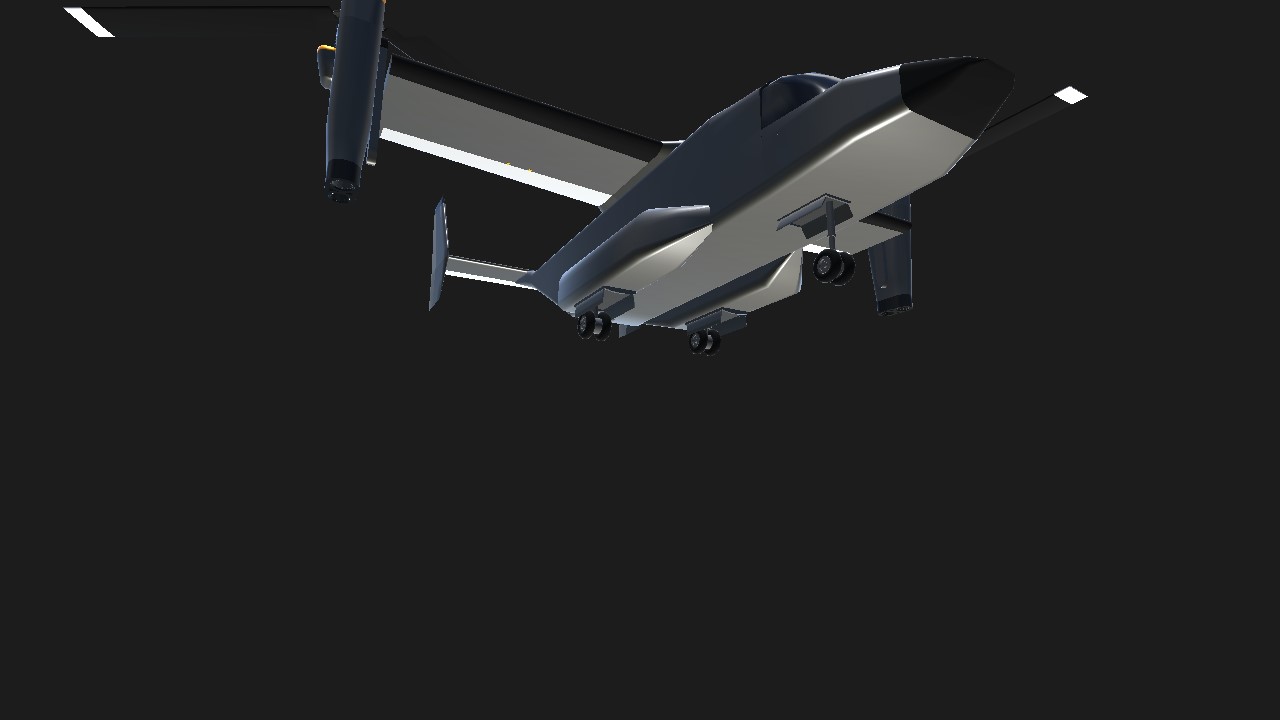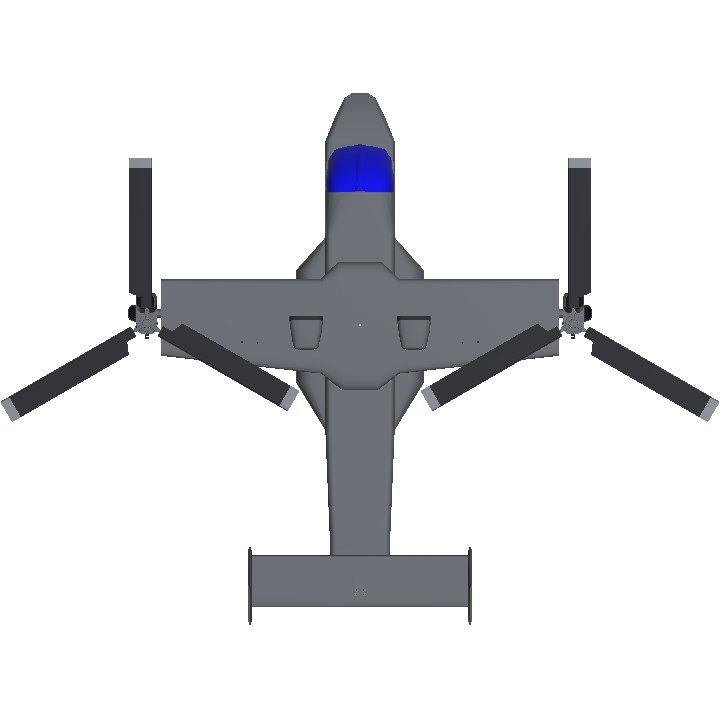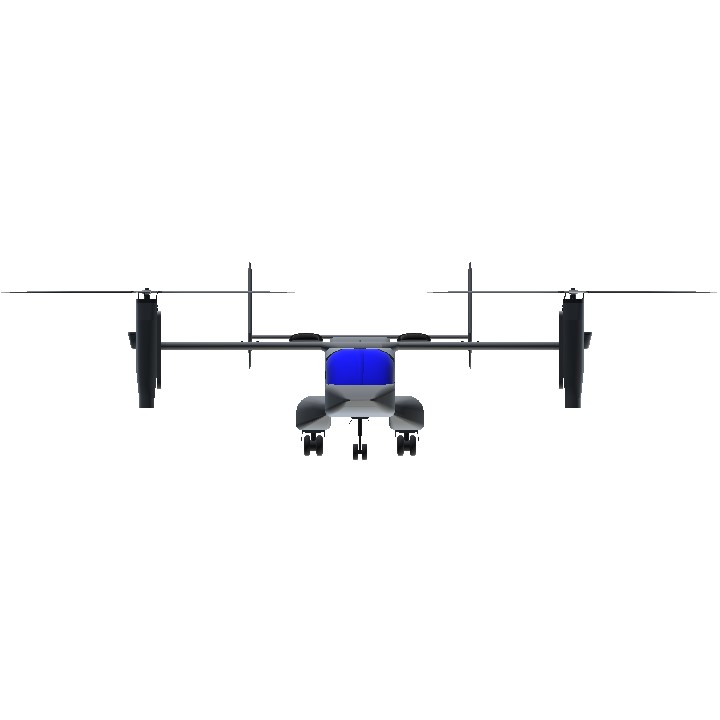This is an upgraded version of the V-22 Osprey, built by @ TheTroller24. I decided to help make the aircraft more stable, and I think I will. Please go to the original post, don't leave your votes here, @ TheTroller24 will post it on your profile soon. I decided to change the T3000 turbo prop engines that were previously installed, and added two helicopter engines, this helps the aircraft to be more maneuverable in flight when its engines are upright, I also added a more powerful gyroscope, so take off it is easier, and the landing as well, but relatively. How to take off? Well, first bring the power of the engines to 100%, then, put the "Trim" lever to the maximum, this way you will get the aircraft to lift off the ground, reach a height equal to or greater than 1900ft, once it is at the previously set height, move the "VTOL" lever down, but only move it to the first notch, in this way the engines are tilted at an angle of 45 °, which will make the aircraft go forward, it will begin to lean towards forward, so you must assist it using "pitch", once you have reached a speed of 250 miles, move the VTOL lever to the maximum in the downward direction, so it will begin to fly at high speed. HOW TO LAND? A few miles before reaching your destination, you should place the engines fully vertical, lower the engine power to 60%, and lower the trim lever to the first notch or perhaps a little lower (not in neutral position), this will decrease your speed, now you will have to tilt the aircraft backwards so that it gradually stops, now reduce the power to 20%. This way it will descend slowly, once on the ground, turn off the engines, and put the trim in neutral position.
Specifications
Spotlights
- 210100 4.4 years ago
General Characteristics
- Predecessor V-22 Osprey
- Created On Android
- Wingspan 68.4ft (20.8m)
- Length 50.7ft (15.4m)
- Height 19.1ft (5.8m)
- Empty Weight 18,162lbs (8,238kg)
- Loaded Weight 39,453lbs (17,895kg)
Performance
- Power/Weight Ratio 43.29
- Horse Power/Weight Ratio 0.114
- Wing Loading 56.6lbs/ft2 (276.1kg/m2)
- Wing Area 697.6ft2 (64.8m2)
- Drag Points 4044
Parts
- Number of Parts 136
- Control Surfaces 0
- Performance Cost 1,041







@TheTroller24, genial, es tuyo, puedes publicarlo en tu perfil 👍
@AlexanderRs I am enjoying it, nice smooth design, and much better and smooth control!👌
@TheTroller24, espero te guste